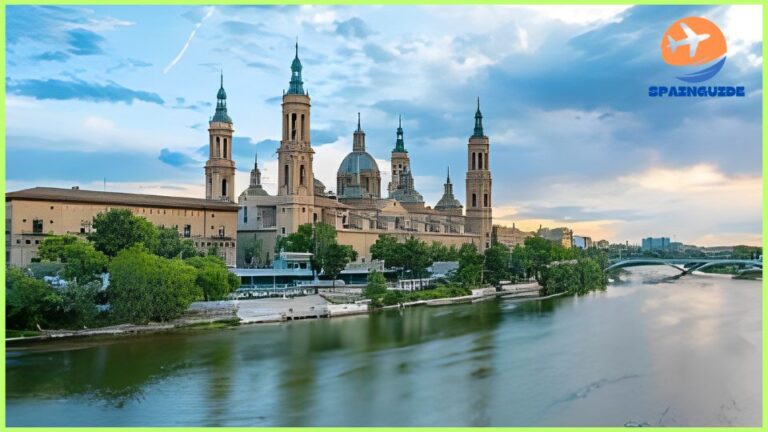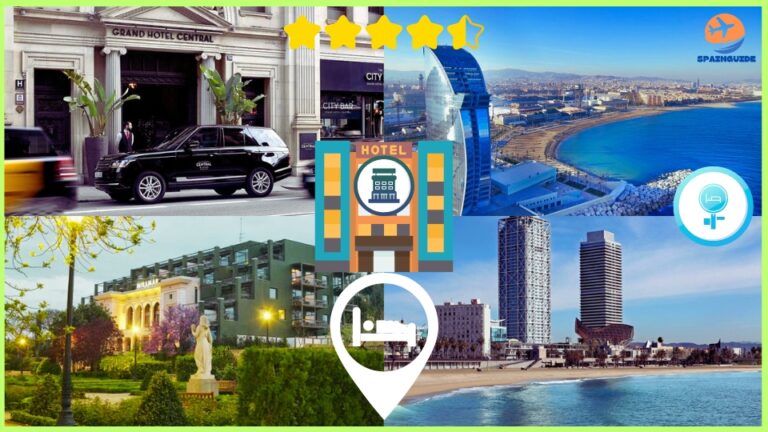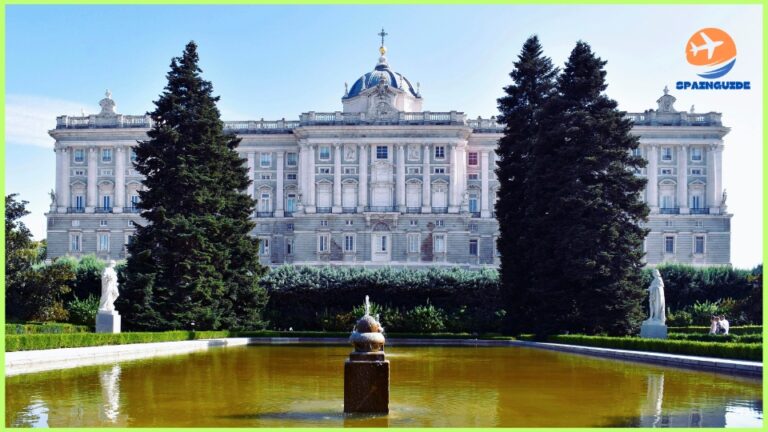Considering a trip to Spain? Great choice! Look I’m saying, it is like Europe’s fun-cousin who enjoys a good time but also has it together! On one hand, you could hang out on the beach drinking sangria or stroll through medieval streets entirely lost…. or if you’re really feeling some moves, you can boogie down until your feet hurt; Spain is a great place for it all!
I have been to Spain a few times now and honestly? Each time is so different. One day you are enjoying the sunny beaches of the Costa del Sol, and the next you are hiking in the mountains of the Pyrenees. It’s a feeling of getting five different countries for the price of one. Plus, the way they seem to have perfected the work to live and not live to work concept can’t be beaten – every meal feels like a fiesta, and sunset drinks are pretty much standard.
Why Spain Should Be on Your List
Look, I could write a novel about why Spain rocks, but here are the highlights:
The scenery is insane: Seriously, Spain’s geography is like someone’s travel wishlist came to life. You’ve got those Instagram-worthy Mediterranean beaches, dramatic mountain ranges that’ll make you feel tiny, and even volcanic landscapes in the Canary Islands. The green valleys up north look nothing like the desert-like plains down south—it’s wild how different everything is.
History buffs, prepare to geek out: Spain has 49 UNESCO World Heritage Sites (yeah, I counted). You can spend hours getting lost in Gaudí’s crazy-beautiful architecture in Barcelona, or just stand there jaw-dropped at the Alhambra in Granada. Trust me, even if you think you don’t care about history, this stuff will blow your mind.
The food scene is next level: Okay, yes, everyone knows about paella and tapas, but Spanish food is SO much more than that. Each region does its own thing—the Basque Country basically turned eating into an art form, while Galicia’s all about that fresh seafood. And the wine? Don’t get me started on how underrated Spanish wines are compared to French ones.
They know how to party: Spanish festivals aren’t just events—they’re experiences that’ll stick with you forever. From the completely bonkers tomato fight in Buñol to those intense Holy Week processions, there’s always something happening. And the energy is just infectious.
The people are genuinely awesome: Here’s the thing about Spaniards—they’ve figured out this whole “mañana” (tomorrow) concept, but it’s not about being lazy. It’s about actually enjoying life instead of rushing through it. Meals are for talking, siestas are smart (not lazy), and making friends over shared food is basically a national sport.
When to Go (The Real Talk)
And to be honest, it’s really never a bad time to go to Spain, but here’s what you should know:
Spring (March-May) is pretty perfect: The weather’s comfortable (like 68-77°F), the crowds haven’t invaded yet, and those orange trees are blooming everywhere. If you want to explore cities like Seville without melting, this is your window. Plus, Easter celebrations are absolutely stunning, especially down south.
Summer (June-August) is beach season, but…: Yeah, the beaches are amazing and every festival is happening, but inland cities like Madrid can hit 104°F. I learned this the hard way trying to sightsee in Seville in July—not my brightest moment. Stick to the coast if you’re going in summer.
Fall (September-November) might be the sweet spot: This is when I like to go. The summer crowds have gone home, the weather’s perfect for walking around, and it’s harvest time in wine country (hello, wine tours!). September’s still warm enough for beaches, but October and November are ideal for city hopping.
Winter (December-February) is underrated: Sure, northern Spain can be chilly and wet, but Andalusia in winter? Chef’s kiss. Perfect weather for exploring Granada, Córdoba, and Seville. Plus, if you’re into skiing, the Pyrenees and Sierra Nevada have some great slopes.
Cities You Can’t Miss
Each Spanish city has its own personality—kind of like different friends in your group.
Barcelona is the artsy, party friend: This place seamlessly mixes old Gothic quarters with Gaudí’s mind-bending architecture. The Sagrada Família is still under construction (since 1882!), Las Ramblas is touristy but fun, and Park Güell feels like you’re in a fairy tale. Oh, and you can hit the beach when you need a break from all the culture.
Madrid is the sophisticated friend who’s secretly wild: Don’t let the art museums fool you—Madrid knows how to party. The Prado, Reina Sofía, and Thyssen museums are incredible (seriously, book a whole day), but the real fun happens in neighborhoods like Malasaña after dark. Retiro Park is perfect for recovering from those late nights.
Seville is pure romance: Picture this: horse-drawn carriages, orange trees lining every street, and flamenco music drifting from random corners. The cathedral is massive, the Alcázar palace is stunning, and getting lost in the Santa Cruz neighborhood with a glass of wine is basically mandatory.
Granada will mess with your head: The Alhambra is hands-down one of the most beautiful places I’ve ever seen. The Albaicín neighborhood feels like stepping back in time, and here’s a pro tip—Granada has this amazing free tapas culture. Order a drink, get free food. You’re welcome.
Valencia is the chill friend who’s got it figured out: This is where paella was invented (and locals will correct you if you call that seafood thing “paella”). The City of Arts and Sciences looks like it’s from the future, and that old riverbed they turned into parks? Perfect for bike rides.
San Sebastián is the foodie friend: More Michelin stars per person than almost anywhere else on Earth. The pintxos bars in the old town are incredible, and La Concha beach is ridiculously beautiful. Plus, Basque culture is fascinating—they have their own language and everything.
Regions Worth Exploring
Spain’s regions are like different countries that happen to share borders.
Andalusia is what most people picture when they think “Spain”: Flamenco, Moorish architecture, and that laid-back southern vibe. Don’t just hit the big cities—those white villages in the mountains are stunning, and the sherry tours in Jerez are surprisingly fun.
Catalonia isn’t just Barcelona: The Costa Brava coastline is gorgeous and way less crowded than the Costa del Sol. Girona has these amazing medieval streets (Game of Thrones filmed there), and Montserrat monastery perched on those weird rock formations is surreal.
Basque Country feels like a different planet: They have their own language, their own food culture, and honestly, their own way of doing everything. Bilbao’s Guggenheim is cool, but exploring those dramatic coastal towns is where the magic happens.
Castile and León is medieval Spain: Salamanca’s golden buildings, Ávila’s perfectly preserved walls, Segovia’s Disney-castle vibes—this region is history class come to life. Plus, they make some seriously good wine.
Galicia is Spain’s Celtic cousin: Green, rainy, and completely different from the rest of the country. Santiago de Compostela is the end point of that famous pilgrimage route, and the coastal scenery is breathtaking.
Food You HAVE to Try
Spanish food varies wildly by region, but here’s what you can’t miss:
Tapas and pintxos are a way of life: they’re not simple snacks; they are a social institution. In Andalusia, many times they’re free with drinks (I know, crazy, right?). In the Basque Country, pintxos are basically little pieces of art! Each region has its own distinct specialties, so just eat your way through the country.
Real paella (not the tourist stuff): Here’s the thing—authentic Valencian paella has rabbit, chicken, beans, and saffron rice. That seafood version you see everywhere? Delicious, but it’s technically a different dish. And locals will judge you if you order it for dinner—paella is lunch food.
Jamón ibérico will ruin you for other ham: These pigs live their best life eating acorns in oak forests, and you can taste the difference. The top-grade stuff literally melts in your mouth. Pair it with Manchego cheese and thank me later.
Tortilla española looks simple but isn’t: Every Spanish menu has this thick potato omelet, and every place makes it differently. The great debate? Onions or no onions. People get surprisingly passionate about this.
Churros con chocolate for breakfast (or at any time): crispy fried dough stick dipped in thick hot chocolate, what is not to like? I know a place in Madrid, Chocolatería San Ginés, which has been doing it since 1894—absolutely worth the crush of tourists.
Spanish wine is criminally underrated: Everyone talks about French and Italian wines, but Spanish ones are incredible and usually cheaper. Try Rioja reds, crisp Albariño whites from Galicia, or some cava (their version of champagne). Even sangria can be amazing when it’s made properly.
Getting Around (Without Losing Your Mind)
Spain’s pretty easy to navigate once you figure out the system:
High-speed trains are your friend: The AVE trains are fast, comfortable, and connect all the major cities. Madrid to Barcelona in 2.5 hours? Yes, please. Book online ahead of time for better prices, and avoid peak travel times if you can.
City transport is solid: Madrid’s metro goes everywhere, Barcelona’s system is super efficient, and even smaller cities usually have decent bus networks. Get a tourist transport pass if you’re staying a few days—it’ll save you money and hassle.
Renting a car for the countryside: If you’re going to the big cities, you obviously don’t need a car (don’t even get me started on the parking situation), but for heading to those white villages in Andalusia or driving along the Costa Brava coastline? You do you, it will be 100% worth it. Also, just a heads up you won’t be able to take your car into many of the city centers.
Learn a few Spanish phrases: Look, many people speak English, especially in tourist areas, but making an effort goes a long way. Start with “gracias,” “por favor,” and “no hablo español muy bien” (I don’t speak Spanish very well). Trust me, people appreciate the effort.
Festivals You Need to Experience
Spanish festivals are bucket-list material:
La Tomatina is exactly as crazy as it sounds: Once a year, Buñol turns into the world’s biggest food fight. For exactly one hour, thousands of people throw overripe tomatoes at each other. You need tickets now (it got too popular), but it’s absolutely bonkers in the best way.
Running of the Bulls (if you’re a dumbass): The whole San Fermín Festival in Pamplona is a blast, running with the bulls or not. Just one week of partying, concerts, and parades. Hemingway was right about this one.
Feria de Abril in Seville is pure magic: Two weeks after Easter, Seville becomes one giant fairground with decorated tents, flamenco dancing, and horse parades. Some tents are private, but there are public ones where you can join the party.
Las Fallas in Valencia is pyrotechnic art: Giant papier-mâché sculptures take over the city for weeks, then they burn them all on March 19th. It’s visually insane and uniquely Spanish.
Semana Santa processions are surprisingly moving: Even if you’re not religious, these Holy Week processions are incredible. Seville’s are the most famous—robed figures carrying elaborate floats through candlelit streets.
Money Talk (The Honest Version)
Spain’s pretty budget-friendly compared to other Western European countries:
It fits most budgets: Hostels run €15-25/night, decent hotels are €60-120, and if you want to splurge, luxury places go €150-400+. Food ranges from €8-15 for casual meals to €50-100+ for fancy dinners.
The menú del día is your secret weapon: Most restaurants offer a three-course lunch menu with bread and drink for €12-18. It’s usually the best value you’ll find.
Lots of free stuff: Many museums have free hours (usually Sunday mornings), churches don’t charge admission, parks are free, and just wandering around old neighborhoods costs nothing. Free walking tours are everywhere too.
Book ahead for deals: Trains and hotels get way cheaper if you book early, especially during busy seasons. Staying a bit outside city centers can save you tons, and public transport makes it easy to get around.
Safety Stuff (Don’t Worry Too Much)
Spain is super safe, but here’s the real deal:
It’s genuinely very safe: Violent crime against tourists is rare. The healthcare system is great, pharmacies are everywhere, and you can call 112 for emergencies.
Watch your stuff in tourist areas: Like anywhere popular, pickpockets work the crowded tourist spots and metro lines. Just don’t flash expensive stuff around and keep your valuables secure. Common sense stuff.
Make copies of your documents: Take photos of your passport, and make sure to keep them separate from the actual passport. Many places will accept copies for ID and it saves wear-and-tear on your passport.
Get travel insurance: Spain’s healthcare is excellent, but insurance covers the weird stuff like trip cancellations and lost luggage. If you’re European, bring your EHIC card.
Here’s the thing about Spain—it’s not just a place you visit, it’s a feeling you take home with you. Whether you’re lounging on a beach, exploring ancient ruins, or sharing late-night tapas with strangers who become friends, Spain has this way of getting under your skin.
The real magic isn’t just in the famous monuments and museums (though those are incredible). It’s in how Spaniards approach life. Meals aren’t rushed—they’re events. Siestas aren’t lazy—they’re smart. And making connections over good food and wine isn’t just nice—it’s essential.
From your first flamenco guitar echoing through cobblestone streets to that last glass of Spanish wine watching the sunset from some random plaza, Spain will completely win you over. I guarantee you’ll start planning your next trip before you’ve even left.
Pack light, learn a few phrases, and get ready for the time of your life. ¡Buen viaje!
P.S. – Seriously, don’t overpack. You’ll want room in your suitcase for all the jamón and wine you’ll inevitably try to bring home.







